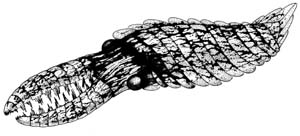
Drawing by Mary Parrish courtesy of the Smithsonian Institution
"The shark of the Cambrian,"Anomalocaris was the largest animal in the Cambrian seas and probably the most effective predator of its day. This carnivore swam in the open sea, probably undulating through the water like a manta ray. It used its claw-like feeding appendages to seize prey and carry it to a round mouth lined with teeth.
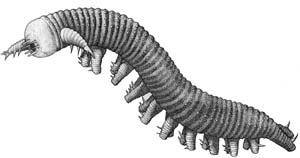
Drawing by Mary Parrish courtesy of the Smithsonian Institution
Aysheaia was a lobe-limbed animal, or lobopodian, meaning it lacked jointed limbs. It was thought to have been a parasite living on sponges and an ancestor of today's velvet worm (Onychophora).
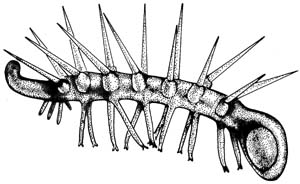
Drawing by Mary Parrish courtesy of the Smithsonian Institution
Fossils of Hallucigenia come with spikes on top, worm-like appendages on the bottom, and no clearly identifiable head. Hallucigenia has been a subject of debate ever since it was discovered.
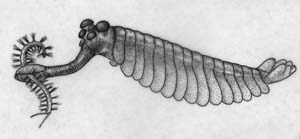
Drawing by Mary Parrish courtesy of the Smithsonian Institution
With five eyes and a front-end "nozzle," Opabinia remains an oddity. It swam with the help of its 15 pairs of paddle-shaped flaps, and it may have used its flexible "trunk" to pull worms from their burrows.
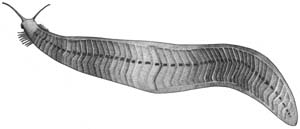
Drawing by Mary Parrish courtesy of the Smithsonian Institution
Pikaia is one of the earliest members of the phylum Chordata—the group to which all animals with backbones and spinal cords belong. It swam close to the sea floor and may have been a filter feeder.
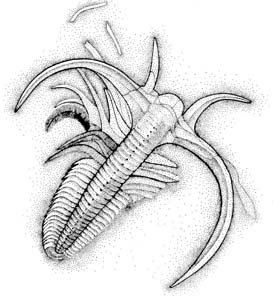
Drawing by Mary Parrish courtesy of the Smithsonian Institution
Photograph by Chip Clark, National Museum of Natural History
Charles Doolittle Walcott nicknamed this fossil the "lace crab" and it is the most abundant of the Burgess Shale animals. The unique head shield had two pairs of large spines curving back over the body. Two pairs of antennae project forward and the body consists of a large number of segments bearing identically shaped limbs.
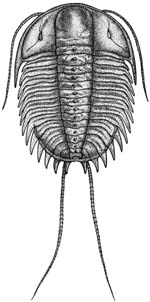
Drawing by Mary Parrish courtesy of the Smithsonian Institution
Olenoides is a trilobite with a hard shell, like a crab. A hunter and a scavenger, the Olenoides' thin limbs suggests that this was not a swimmer. The fossilized tracks this trilobite left in bottom sediment shows that it crawled along the bottom and dug in pursuit of its prey.
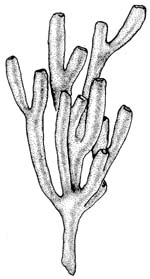
Drawing by Mary Parrish courtesy of the Smithsonian Institution
This branched sponge is the most common sponge in the Burgess Shale; several hundred specimens have been recovered.
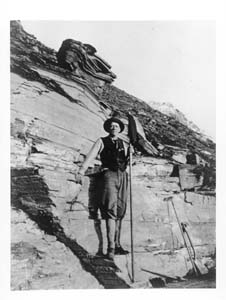
Paleontologist, Charles Doolittle Walcott, at the site now known as the Walcott Quarry.